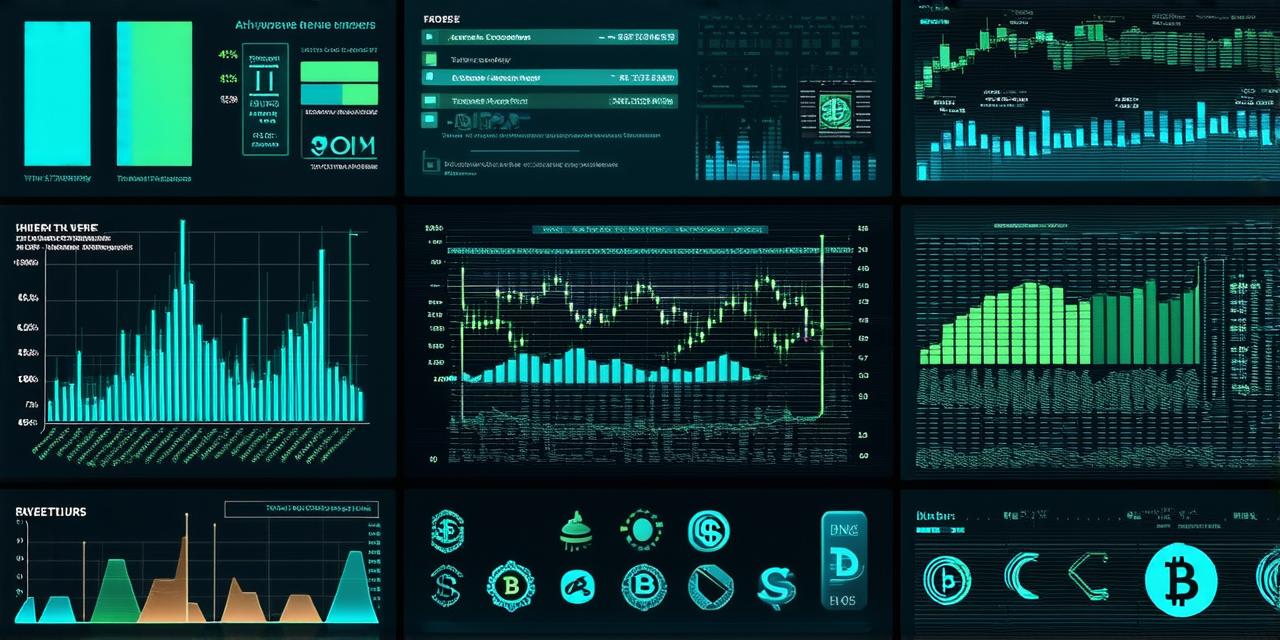Understanding Cryptocurrency Charts: A Primer
Before we dive into specific types of charts and how to read them, let’s first understand what cryptocurrency charts are and why they are important.
Cryptocurrency charts are visual representations of the price and trading activity of a particular digital asset over time. They can be used to track price movements, identify trends, and make informed investment decisions. There are many different types of charts available, each with its own unique features and benefits.
The most common type of cryptocurrency chart is the line chart, which shows the price of an asset over a specific period of time. Other popular chart types include candlestick charts, bar charts, and scatter plots.
Understanding Cryptocurrency Charts: A Primer
Before we dive into specific types of charts and how to read them, let’s first understand what cryptocurrency charts are and why they are important.
Cryptocurrency charts are visual representations of the price and trading activity of a particular digital asset over time. They can be used to track price movements, identify trends, and make informed investment decisions. There are many different types of charts available, each with its own unique features and benefits.
The most common type of cryptocurrency chart is the line chart, which shows the price of an asset over a specific period of time. Other popular chart types include candlestick charts, bar charts, and scatter plots.
Understanding Cryptocurrency Charts: A Primer
Before we dive into specific types of charts and how to read them, let’s first understand what cryptocurrency charts are and why they are important.
Cryptocurrency charts are visual representations of the price and trading activity of a particular digital asset over time. They can be used to track price movements, identify trends, and make informed investment decisions. There are many different types of charts available, each with its own unique features and benefits.
The most common type of cryptocurrency chart is the line chart, which shows the price of an asset over a specific period of time. Other popular chart types include candlestick charts, bar charts, and scatter plots.
Interpreting Line Charts
Now that we’ve covered some general principles let’s dive into specific chart types. The first type of chart we will discuss is the line chart.
A line chart shows the price of an asset over time, with each data point plotted as a single dot on the graph. These dots are then connected by lines to create a visual representation of how the price has changed over time.
Here are some key things to keep in mind when interpreting line charts:
- Trends: As mentioned earlier, understanding the overall trend of an asset is critical when interpreting a line chart. Look for trends in the data points and lines to determine whether the price is going up or down.
- Support and Resistance Levels: Identifying key support and resistance levels on a line chart can provide insight into potential buying or selling opportunities. These levels are typically determined by looking at historical price data and identifying areas where the price has historically stopped falling or rising, respectively.
- Volume: The volume of an asset is also important to consider when interpreting a line chart. High volume often indicates increased interest in an asset, which can drive price movements. Low volume may indicate decreased demand and potentially lower prices.
- News and Events: Keeping an eye on industry developments and regulatory changes can help you better understand how these factors may impact the price of a particular asset. Major news events or regulatory changes can cause significant fluctuations in the price of an asset, so it’s important to stay up-to-date on these developments.

Interpreting Candlestick Charts
Candlestick charts are another popular type of cryptocurrency chart that provide additional information compared to line charts. These charts use candles to represent the price of an asset over a specific period of time, with each candle containing both an opening and closing price, as well as a high and low price for the period.
Here are some key things to keep in mind when interpreting candlestick charts:
- Trends: Similar to line charts, understanding the overall trend of an asset is critical when interpreting a candlestick chart. Look for trends in the candles to determine whether the price is going up or down.
- Support and Resistance Levels: Candlestick charts also provide information on support and resistance levels, as these are often indicated by the location of the high and low prices within each candle. This can provide insight into potential buying or selling opportunities.
- Volume: The volume of an asset is also important to consider when interpreting a candlestick chart. High volume often indicates increased interest in an asset, which can drive price movements. Low volume may indicate decreased demand and potentially lower prices.
- News and Events: Keeping an eye on industry developments and regulatory changes can help you better understand how these factors may impact the price of a particular asset. Major news events or regulatory changes can cause significant fluctuations in the price of an asset, so it’s important to stay up-to-date on these developments.
Interpreting Bar Charts
Bar charts are another type of cryptocurrency chart that provide additional information compared to line charts. These charts use bars to represent the price of an asset over a specific period of time, with each bar containing both an opening and closing price, as well as a high and low price for the period.
Here are some key things to keep in mind when interpreting bar charts:
- Trends: Similar to line charts, understanding the overall trend of an asset is critical when interpreting a bar chart. Look for trends in the bars to determine whether the price is going up or down.
- Support and Resistance Levels: Bar charts also provide information on support and resistance levels, as these are often indicated by the location of the high and low prices within each bar. This can provide insight into potential buying or selling opportunities.
- Volume: The volume of an asset is also important to consider when interpreting a bar chart. High volume often indicates increased interest in an asset, which can drive price movements. Low volume may indicate decreased demand and potentially lower prices.
- News and Events: Keeping an eye on industry developments and regulatory changes can help you better understand how these factors may impact the price of a particular asset. Major news events or regulatory changes can cause significant fluctuations in the price of an asset, so it’s important to stay up-to-date on these developments.
Interpreting Scatter Plots
<p
